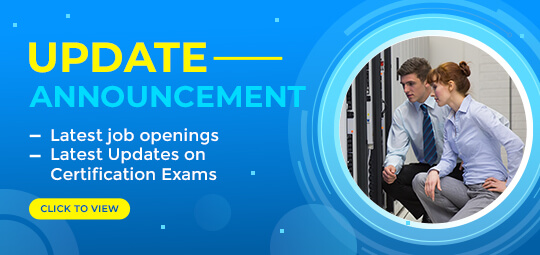TRUSTED BY THE SMARTEST TEAMS IN THE WORLD FOR CERTIFIED CANDIDATES
SPOTO Blogs
Useful learning materials to become certified IT personnel
-
- 573
- SPOTO 2
- 2025-10-23 15:08
-
- 523
- SPOTO 2
- 2025-10-22 15:30
-
- 563
- SPOTO 2
- 2025-10-22 15:24
-
- 528
- SPOTO 2
- 2025-10-21 14:52
-
- 539
- SPOTO 2
- 2025-10-21 14:45
-
- 575
- SPOTO 2
- 2025-10-20 15:50
-
- 550
- SPOTO 2
- 2025-10-20 15:37
-
- 513
- SPOTO 2
- 2025-10-17 11:34
-
- 567
- SPOTO 2
- 2025-10-17 11:28
TRUSTED BY THE SMARTEST TEAMS IN THE WORLD FOR CERTIFIED CANDIDATES
SPOTO Blogs
Useful learning materials to become certified IT personnel
-
- 573
- SPOTO 2
- 2025-10-23 15:08
Table of Contents1. Introduction to the PSM III certification2. Career Value of Holding the PSM III Certification3. Core Components of the Professional Scrum Master III Certification4. What are the requirements to be a PSM III?5. Comparable Certifications to Professional Scrum Master III Certification PSM III is the pinnacle of the Scrum certification system, which aims to cultivate agile strategic experts with systemic thinking and organizational change leadership. 1. Introduction to the PSM III certification Professional Scrum Master III (PSM III) is the highest level certification in the Scrum certification system launched by Scrum.org, focusing on verifying your Scrum deep practice ability, coaching leadership, and organizational level agile change driving ability in extremely complex scenarios. It requires you not only to be a "master" of the Scrum framework, but also a "strategic expert" who can diagnose and solve the core pain points of organizational agile transformation and shape agile culture. It is one of the most valuable authoritative qualifications in the Scrum field. When enterprises face extreme challenges such as large-scale agile transformation resistance, complex cross departmental collaboration deadlock, and agile adaptation under high compliance requirements, ordinary Scrum Masters find it difficult to break through the limitations of the "team level." The core of PSM III certification is to cultivate "agile strategic experts with systems thinking and change leadership," rather than simply process guides. The certificate holder needs to be like an "organizational agile doctor," diagnosing the deep problems of organizational agile transformation from a strategic perspective, promoting systematic organizational change through coach style intervention and influence building, and designing sustainable Scrum practice systems for multiple teams, or even the entire organization. These types of talents usually play the role of "leaders of organizational agile transformation," balancing short-term business goals with long-term agile capability building. 2. Career Value of Holding the PSM III Certification PSM III is the "crown level" certification in the Scrum field, issued by Scrum.org, founded by Scrum founder Ken Schwaber. With less than 10000 global holders, it is highly recognized among multinational corporations and is the core symbol of "expert level" identity in the Agile field. Compared to PSM II or other agile certifications, PSM III holders almost monopolize top positions such as "Agile Director" and "Enterprise Transformation Leader." The high difficulty exams and strict practical requirements ensure that you can handle extreme scenarios that ordinary Scrum Masters cannot solve, becoming the "core think tank" for enterprise agile transformation. Having PSM III certification allows one to join Scrum.org's "PSM III Elite Community" and directly connect with top Scrum experts worldwide, participate in closed door seminars. 3. Core Components of the Professional Scrum Master III Certification PSM III certification, as the highest professional level certification in the Scrum field, marks the leap of practitioners from practitioners to leaders of organizational change. The PSM III certification system breaks through the traditional Scrum process framework, achieving a clear understanding of the essence and philosophy of the framework through empirical and complex adaptive system theory. It can design customized Scrum systems for complex scenarios to achievie precise adaptation of the framework to business characteristics. Organizational transformation architecture design identifies and breaks through fundamental barriers such as functional barriers and assessment conflicts, develops a transformation roadmap from pilot teams to the entire organization's agile culture, and promotes the restructuring of organizational structure and processes. The ability to make complex risk decisions in extreme scenarios such as distributed teams and large-scale dependencies, using systems thinking tools to analyze risk transmission paths and establish a forward-looking risk management system. Agile culture shapes the implementation mechanism of design values and the construction plan of psychological safety environment, elevating agility from process methods to organizational culture. Inheriting and cultivating an internal coaching team, building a replicable knowledge management system, and ensuring the continuous evolution of organizational capabilities. PSM III certification places special emphasis on cultivating students' systematic thinking and change driving abilities at the strategic level. A complete system covering philosophical theories and practical tools, providing students with comprehensive solutions to address the complex challenges of modern enterprises. 4. What are the requirements to be a PSM III? (1) Qualification prerequisites: You need to first obtain the Professional Scrum Master II (PSM II) certification and have a solid foundation in mid to high-level Scrum practices. Scrum.org recommends that you have at least 3 years of Scrum Master practical experience and have participated in at least 1 complete organizational level agile transformation project, experiencing problem-solving in complex scenarios. Scrum.org does not have mandatory training requirements, but we strongly recommend that you participate in advanced specialized training taught by a Professional Scrum Trainer (PST), focusing on complex scenario case analysis and coaching skills polishing. (2) Training and examinations: The Professional Scrum Master III exam consists of 30 situational analysis questions, with a focus on "complex problem diagnosis and solution design." The exam lasts 120 minutes longer than PSM II and requires a thorough analysis of complex scenarios. A perfect score of 100 is required to achieve a score of 90 or above to pass. The global pass rate is only about 10%-15%, making it one of the most difficult exams in Scrum certification. The exam fee is approximately $500. It is particularly important to note that scoring not only tests the correctness of answers, but also emphasizes the "logicality of solutions, degree of adherence to Scrum principles, and flexibility in dealing with complex scenarios." Open ended questions need to clearly explain the decision-making basis. (3) Qualification maintenance: The Professional Scrum Master III certificate is valid for life and does not require renewal, but Scrum.org encourages holders to maintain their learning by participating in Scrum.org's "Professional Scrum Contributor" program, sharing practical cases or writing professional articles, or serving as Scrum.org community instructors or teaching assistants in certification training courses. 5. Comparable Certifications to Professional Scrum Master III Certification Advanced Certified Scrum Master - Level 3 (A-CSM 3) SAFe Program Consultant 6.0 (SPC 6.0) Certified Enterprise Coach (CEC) -
- 523
- SPOTO 2
- 2025-10-22 15:30
Table of Contents1. Introduction to the Registered ScrumMaster certification2. The Competitive Edge of a RSM Certification 3. Core Components of the Registered ScrumMaster Certification4. What are the requirements to be a registered ScrumMaster?5. Comparable Certifications to Registered ScrumMaster Certification Registered ScrumMaster is an entry-level agile certification endorsed by the founder that focuses on the precise implementation of Scrum practices and team empowerment. 1. Introduction to the Registered ScrumMaster certification Registered ScrumMaster (RSM) is an entry-level agile certification launched by Scrum Inc., focusing on the practical implementation of the Scrum framework and team guidance capabilities. It aims to cultivate professional talents who can proficiently apply Scrum core practices, remove team barriers, and promote efficient value delivery. It is one of the authoritative entry-level qualifications for entering the Scrum field. In the enterprise environment of accelerated agile transformation, teams need mentors who understand both the Scrum process and can flexibly implement it. The core of RSM certification is to cultivate "precise executors and team enablers of Scrum practices," emphasizing the original ideas of Scrum founders, helping teams break free from traditional management constraints, and achieving rapid iteration and value delivery through standardized execution of Scrum events and optimized collaboration processes. These types of talents usually play the role of "team efficiency catalysts" and need to focus on solving practical problems. 2. The Competitive Edge of a RSM Certification RSM is awarded by Scrum Inc., founded by Scrum founder Jeff Sutherland. The certification content adheres to the original Scrum philosophy and is highly recognized in enterprises that emphasize "orthodox Scrum practices." Training and exams focus on "practical skills" rather than pure theory, and can be directly applied to team management after learning, optimizing Scrum event processes, solving practical obstacles, and suitable for practitioners who focus on practical results. As an entry-level certification in the Scrum field, RSM is an important qualification for job seekers seeking entry-level ScrumMaster positions. With RSM certification, you can join the Scrum Inc. global community, access Jeff Sutherland's latest practical cases, participate in official online seminars, and directly learn from the founder's cutting-edge experience. 3. Core Components of the Registered ScrumMaster Certification RSM certification deeply inherits the practical essence of Scrum founder Jeff Sutherland and constructs a complete certification system from theory to practice. The RSM certification focuses on the in-depth analysis of Scrum core theoretical modules and the original framework design concepts, emphasizing the practical application of empiricism in iterative feedback and helping learners understand the inherent logical relationship between values and framework components. The Role Based Collaborative Unit trains the collaborative mechanisms of the three main roles through real-life scenarios, with a focus on developing the Scrum Master's ability to clear obstacles, the Product Owner's ability to make value decisions, and the development team's self-organizing ability. The efficient execution phase of events provides specific and feasible optimization solutions for the five major events that are easy to formalize in daily practice, including user story decomposition methods, station meeting time control techniques, and retrospective guidance techniques based on Scrum Inc.'s official tools. The obstacle recognition and removal module system sorts out common organizational and technical obstacles in practice, and provides data-driven improvement methods to continuously optimize team effectiveness through key indicators such as delivery rate and obstacle resolution time. The practical tool application section combines mainstream tools such as Jira to demonstrate how to effectively monitor project progress through visualization methods such as burndown charts, ensuring that Scrum practices are measurable and optimizable. RSM certification places special emphasis on transforming the founder's original ideas into practical skills that can be implemented, using real-life cases to help students grasp the essence of the framework rather than the surface process. It includes both the core interpretation of Scrum theory and the full process optimization plan from planning to review, helping you maintain the accuracy and effectiveness of Scrum implementation in complex work environments. For practitioners who wish to learn orthodox Scrum and quickly get started with agile management, RSM certification is an authoritative and practical choice that can gain industry recognition and master directly applicable team management skills. 4. What are the requirements to be a registered ScrumMaster? (1) Qualification prerequisites: There are no strict educational or work experience requirements for RSM certification, which is suitable for beginners with zero foundation. Before the exam, you need to attend an official RSM training course authorized by Scrum Inc., taught by a certified Scrum trainer. After completing the training and obtaining a certificate of completion, you can register for the exam. (2) Training and examinations: The RSM certification consists of 50 multiple-choice questions, with a test duration of 60 minutes. Answer 70% or more correctly to pass, with a focus on practical application scenarios. (3) Qualification maintenance: The RSM certificate is valid for 2 years and requires the accumulation of 16 Scrum Education Credits by participating in Scrum Inc. recognized continuing education activities and advanced training during the validity period, and timely payment of the renewal fee of approximately $100 per 2 years. 5. Comparable Certifications to Registered ScrumMaster Certification Certified ScrumMaster (CSM) Professional Scrum Master (PSM) Disciplined Agile Scrum Master (DASM) ICAgile Certified Professional (ICP) -
- 563
- SPOTO 2
- 2025-10-22 15:24
Table of Contents1. Introduction to the Professional Scrum Master II certification2. The Competitive Edge of a PSM II Certification 3. Core Components of the Professional Scrum Master II Certification4. What are the requirements to be a Professional Scrum Master II?5. Comparable Certifications to Professional Scrum Master II Certification Professional Scrum Master II is an advanced certification in the Scrum field that focuses on in-depth practice and coaching facilitation capabilities in complex scenarios. 1. Introduction to the Professional Scrum Master II certification Professional Scrum Master II (PSM II) is an advanced Scrum certification launched by Scrum.org, which is an upgraded version of PSM I. It focuses on verifying your deep practical skills and coaching guidance ability in applying the Scrum framework in complex scenarios. It requires you to not only master the core principles of Scrum, but also be able to flexibly respond to team growth obstacles and promote the effective implementation of Scrum at the team and organizational levels. It is a key certification for advancing from a "basic practitioner" to a "senior guide." As Scrum teams move from "entry-level" to "mature," they will face more complex challenges such as insufficient team self-organization ability, inefficient cross departmental collaboration, management's misunderstanding of agile, and dynamic imbalance between requirements and resources. The core positioning of PSM II certification is to cultivate "coaching talents who can diagnose and solve complex Scrum problems," rather than simply being process executors. The certificate holder needs to act like a "doctor" by observing team behavior, analyzing collaboration patterns, accurately identifying deep problems in Scrum implementation, and using coaching skills to guide the team to independently solve them, while promoting the optimization of the organizational environment towards supporting Scrum. These types of talents usually play the role of "team catalysts and organizational change drivers," balancing team health and business goals. 2. The Competitive Edge of a PSM II Certification PSM II is a widely recognized "proof of seniority" in the Scrum field, and its high difficulty exam ensures that you have the practical ability to solve complex problems. It is the core screening criteria for positions such as "Senior Scrum Master" and "Agile Coach" in recruitment. According to industry data, the average annual salary of PSM II holders is 30%-40% higher than that of PSM I holders. The PSM II certification learning process cultivates the analytical ability to "see the essence through phenomena" and helps practitioners shift from passive problem-solving to proactive problem prevention. After obtaining the certificate, you can join the advanced community of Scrum.org, access the world's top Scrum practice cases and expert resources, participate in industry sharing, and enhance your personal brand influence. 3. Core Components of the Professional Scrum Master II Certification PSM II certification, as an advanced certification for Scrum professionals, focuses on the deep cultivation of agile practice skills and coaching leadership in complex scenarios. On the basis of PSM I, PSM II certification has built five core competency systems, with deep application modules that go beyond the mechanical execution of standard processes, cultivating the ability to flexibly adjust practices according to team size, distribution characteristics, and industry characteristics, mastering the integration of Scrum with XP, Kanban and other methods, and solving complex problems such as quality assurance under high-frequency changes. Team empowerment guidance involves diagnosing self-organizing disorders, using coaching techniques such as active listening and powerful questioning to help the team establish independent improvement capabilities, and achieving a transition from "management" to "stimulation." Organizational change drives the focus on identifying and removing organizational level barriers, presenting agile value through dataization, optimizing performance evaluation systems and reengineering collaborative processes, and building an environment that supports self-organizing teams. Complex risk management targets fuzzy requirements and rapidly changing scenarios, introducing advanced practices. An efficient collaboration mechanism enhances the value decision-making ability of product owners, optimizes stakeholder collaboration models, and ensures maximum collaboration efficiency within and outside the team. PSM II certification places special emphasis on cultivating students' judgment and adaptability in real business environments. Through case analysis and practical tools, it helps you grow from a standard executor to an agile coach capable of handling complex challenges. The certification covers real-world scenarios such as large-scale teams, distributed collaboration, and strong compliance environments, providing students with a systematic framework for problem diagnosis and resolution. 4. What are the requirements to be a Professional Scrum Master II? (1) Qualification prerequisites: The prerequisite for obtaining PSM II is that you first obtain the Professional Scrum Master I (PSM I) certification and have a solid foundation in Scrum. Scrum.org recommends that you have 1-2 years of practical Scrum Master experience, have participated in at least 1-2 complete Scrum project cycles, and have experienced typical challenges of team growth. PSM II does not require mandatory training, but Scrum.org strongly recommends attending advanced training taught by a Professional Scrum Trainer (PST) to deepen the ability to cope with complex scenarios. (2) Training and examinations: The PSM II exam consists of 30 multiple-choice questions and lasts for 90 minutes. A maximum score of 100 is required, with a minimum score of 85 to pass. The difficulty level is significantly higher than PSM I, with a focus on analyzing and making decisions in complex scenarios. The exam fee is approximately $250 (3) Qualification maintenance: But the good news is that the PSM II certificate is valid for life and does not require renewal, but Scrum.org encourages holders to deepen their professional skills through continuous practice, participation in community activities, or taking the PSM III exam. 5. Comparable Certifications to Professional Scrum Master II Certification PMI Agile Certified Practitioner (PMI-ACP) Professional Scrum Product Owner II (PSPO II) Advanced Certified Scrum Master (A-CSM) SAFe Scrum Master (SSM) -
- 528
- SPOTO 2
- 2025-10-21 14:52
Table of Contents1. Introduction to the PSM I certification2. The Competitive Edge of a PSM I Certification3. Core Components of the PSM I Certification4. What are the requirements to be a Professional Scrum Master I?5. Comparable Certifications to Professional Scrum Master I Certification Professional Scrum Master I (PSM I) is an entry-level certification in the agile field endorsed by the Scrum founding team, focusing on "deep understanding and flexible application." 1. Introduction to the PSM I certification Professional Scrum Master I is an entry-level certification in the agile field endorsed by the Scrum founding team, focusing on "deep understanding and flexible application." Professional Scrum Master I (PSM I) is an entry-level Scrum certification launched by Scrum.org, focusing on a deep understanding and flexible application of the core theories, practical principles, and application scenarios of the Scrum framework. Its aim is to verify the ability of practitioners as Scrum Masters to guide teams in practicing Scrum values, standardizing the execution of Scrum events and artifacts, and effectively solving common problems in practice. It is a highly recognized entry-level certification in the agile field. In modern project management that emphasizes rapid response to change and continuous delivery of value, the standardized implementation of the Scrum framework relies on a deep understanding of its underlying logic. The core positioning of PSM I certification is to cultivate Scrum practitioners who understand principles and are able to implement them, rather than just "process managers" who master process forms. You need to have a deep understanding of the theoretical foundation of Scrum, be able to flexibly apply the Scrum framework according to the actual situation of the team rather than mechanically applying processes, and ultimately help the team achieve self-organization, cross functional collaboration, and improve delivery efficiency and product quality. These types of talents usually play the role of "coaches and consultants" for the team, and need to solve complex scenario problems based on their understanding of Scrum principles. 2. The Competitive Edge of a PSM I Certification Scrum.org was founded by Ken Schwaber, the founder of Scrum. The PSM certification series is known for its emphasis on principles and practice, and is highly recognized among global technology companies and domestic giants. It is a core reference for agile job recruitment. The PSM I exam has a low pass rate and focuses on understanding the principles, making it easier for holders to be recognized as professionals who truly understand Scrum. Compared to certification that focuses solely on processes, the "principle-based" abilities cultivated by PSM I are applicable to a wider range of scenarios, laying the foundation for advanced Scrum Masters or Agile coaches. And the most noteworthy thing is that PSM I certification does not require mandatory training and can be self studied and prepared through free resources, suitable for practitioners with limited budgets but who hope to improve their systems. 3. Core Components of the PSM I Certification PSM I certification deeply analyzes the core essence and practical essence of Scrum framework, focusing on cultivating students' profound understanding of agile principles rather than mechanical memory. The PSM I certification system is built around five core modules. The Scrum foundational theory module starts from empiricism and complex adaptive system theory, explaining the practical significance of the three pillars and systematically explaining the implementation methods of the five values. The role responsibility boundary precisely defines the triple responsibilities of Scrum Master service-oriented leadership, clarifies the core mission of the Product Owner to be responsible for product value, and emphasizes the key requirements of development team self-organization and cross functional collaboration. In depth analysis of the design principles of each Scrum event, from the invariance principle of the sprint's fixed time box to the developer led feature of daily station meetings, reveals how events collaborate to achieve a continuous improvement cycle. The logic of workpiece management focuses on explaining the dynamic characteristics and clarity standards of product to-do lists, analyzing the essence of sprint to-do lists as team commitments, and emphasizing that increments must meet the quality requirements of the "definition of completion." Provide solutions to practical challenges such as requirement changes, estimation deviations, and cross departmental collaboration, help identify and correct the phenomenon of "pseudo agility"; and guide teams to return to the essence of Scrum. PSM I certification emphasizes a deep understanding of the principles of Scrum framework, helps students master the ability to cope with complex work environments through scenario based teaching, and focuses on cultivating students' judgment and adaptability in real scenarios, rather than simply applying templates. 4. What are the requirements to be a Professional Scrum Master I? (1) Qualification prerequisites: PSM I certification does not require mandatory training or work experience, making it suitable for all practitioners who wish to systematically learn Scrum. (2) Training and examinations: The PSM I question type includes 80 multiple-choice questions, with a test duration of 60 minutes and a maximum score of 100. Only those who score 85 or above can pass. The difficulty level is higher than that of similar entry-level certifications, and the exam fee is approximately $150. (3) Qualification maintenance: The PSM I certificate is valid for life and does not require renewal, but Scrum.org encourages holders to continue learning and deepen their abilities through practice or advanced certification. 5. Comparable Certifications to Professional Scrum Master I Certification Certified Scrum Master (CSM) PMI - Agile Certified Practitioner (PMI - ACP) EXIN Agile Scrum Master -
- 539
- SPOTO 2
- 2025-10-21 14:45
Table of Contents1. Introduction to the Scaled Professional Scrum certification2. The Rewards of Being a Scaled Professional Scrum3. Core Components of the Scaled Professional Scrum Certification4. What are the requirements to be a Scaled Professional Scrum?5. Comparable Certifications to Scaled Professional Scrum Certification Scaled Professional Scrum is an advanced certification for large-scale Scrum practices, focusing on multi-team collaboration and the ability to promote agile transformation. 1. Introduction to the Scaled Professional Scrum certification Scaled Professional Scrum (SPS) is an advanced certification launched by Scrum.org, focusing on the validation of the ability to scale the application of the Scrum framework in large organizations or complex projects. For practitioners who wish to delve deeper into the agile field in large enterprises or complex projects, SPS certification is not only an authoritative endorsement of their abilities, but also an important ladder to break through career ceilings and participate in high-value transformation projects. It is recommended that after accumulating practical experience in single team Scrum, training and practical case analysis be conducted to prepare for the exam and improve application skills. It is based on the core principles of Scrum and aims to cultivate professionals who can design and guide large-scale Scrum practices for scenarios such as multi team collaboration and cross departmental alignment. It is suitable for managers, architects, or senior Scrum Masters who need to coordinate multiple Scrum teams to achieve large-scale product delivery. When a company needs to collaborate with multiple Scrum teams to deliver complex products, the Scrum practice of a single team is difficult to address challenges such as inter team dependencies, goal alignment, and resource coordination. The core of SPS certification is to cultivate "designers and drivers of scaled Scrum," help organizations break down team barriers, establish cross team collaboration mechanisms, ensure efficient collaboration among multiple Scrum teams around a common product vision, and achieve scaled delivery of value. These types of talents usually play the role of "bridges" in organizational level agile transformation, balancing local team efficiency with overall product goals. 2. The Rewards of Being a Scaled Professional Scrum SPS certification focuses on the most challenging issue of "multi team collaboration" in practical situations. Having SPS certification can be recognized by enterprises as an expert with the ability to implement from "single team agility" to "organizational level agility," especially in large enterprises where demand is high. Compared to practitioners who only master single team Scrum, SPS holders are more likely to be promoted to senior management positions. The training and examination process covers Scrum@Scale. The practical points of mainstream frameworks help you break away from "empiricism" and master replicable methods for large-scale design. Having SPS certification also allows one to join Scrum.org's SPS community, access global scale practice cases, participate in high-end forums, connect with experts in the same field, and provide reference ideas for complex projects. 3. Core Components of the Scaled Professional Scrum Certification SPS certification focuses on the application and extension of Scrum framework in large-scale environments, aiming to address complexity issues in multi team collaboration. In depth analysis of the SPS certification system around the principle of scale and framework modules Scrum@Scale. The core components of mainstream extension frameworks such as LeSS emphasize achieving multi team collaboration through transparency, alignment, and synchronization mechanisms, avoiding the introduction of unnecessary management hierarchies. The multi team collaboration mechanism focuses on training product goal decomposition skills, achieving strategic alignment through quarterly OKRs and other tools, and effectively managing technical and resource dependencies between teams using visualization methods such as dependency maps. The organizational empowerment system cultivates the ability to identify and remove organizational level barriers, including breaking down departmental barriers, optimizing traditional processes, adjusting assessment mechanisms, and promoting the transformation of the organization towards a product oriented team architecture. Role expansion and collaboration redefine the responsibilities of each role in a scaled scenario, covering the coordination ability of cross team Scrum Masters, the division of labor and collaboration mode of Product Owner teams, and the transition of management from directive to empowering. Establish a cross team unified quality standard and a sound risk management mechanism for the quality and risk control system, ensuring the stability and reliability of large-scale delivery. SPS certification includes in-depth analysis of large-scale frameworks and practical experience throughout the entire process from strategic alignment to execution. 4. What are the requirements to be a Scaled Professional Scrum? (1) Qualification prerequisites: The prerequisite for obtaining SPS certification is to obtain Professional Scrum Master I (PSM I) certification and have a solid foundation in Scrum. Scrum recommends that you have at least one year of experience in multi team collaboration or large-scale projects, and understand the challenges of scaling scenarios. You need to participate in the "SPS Certification Training" authorized by Scrum.org, which focuses on practical cases and interactive exercises. (2) Training and examinations: The SPS certification consists of 40 multiple-choice questions, with a test duration of 60 minutes and a maximum score of 100 points. Only those who score 85 or above can pass. (3) Qualification maintenance: The SPS certificate is valid for life and does not require renewal, but Scrum.org encourages holders to deepen their scalability skills through practical or advanced learning. 5. Comparable Certifications to Scaled Professional Scrum Certification Certified Scrum Professional - Scrum Master (CSP-SM) Scrum@Scale Practitioner Professional Scrum Master III (PSM III) Scaled Scrum Professional Certification (SSPC) -
- 575
- SPOTO 2
- 2025-10-20 15:50
Table of Contents1. Introduction to the VCP-TKO certification2. The Competitive Edge of a VCP-TKO Certification3. Core Components of the VCP-TKO Certification4. What are the requirements to be a VMware Certified Professional—Tanzu for Kubernetes Operation?5. Comparable Certifications to VMware Certified Professional - Tanzu for Kubernetes Operation Certification VCP-TKO is an intermediate-level certification in enterprise-level cloud-native operations and maintenance, focusing on the VMware Tanzu platform and Kubernetes clusters. 1. Introduction to the VCP-TKO certification VMware Certified Professional - Tanzu for Kubernetes Operations (VCP-TKO) is an intermediate technical certification launched by VMware, focusing on the validation of Kubernetes operation and maintenance capabilities in the cloud native field. With VMware Tanzu series products as the technical core, it aims to assess your professional ability to automate Kubernetes clusters based on the Tanzu platform. It is suitable for technical personnel responsible for building enterprise cloud native infrastructure and Kubernetes operation and maintenance. In the context of the comprehensive penetration of cloud native technology into enterprise IT architecture, Kubernetes has become the de facto standard for container orchestration, and VMware Tanzu, as an enterprise level cloud native platform, provides a smooth transition solution for traditional VMware users to Kubernetes. The core of VCP-TKO certification is to cultivate professional talents who are proficient in enterprise level Kubernetes operation and governance. They can build stable, secure, and scalable Kubernetes infrastructure based on the Tanzu platform, and solve the problems faced by enterprises in cloud native transformation, such as complex Kubernetes cluster management, low operation efficiency, and difficult implementation of security compliance. These types of talents usually play the role of "operation and maintenance experts and governance executors" in enterprise cloud native infrastructure, and need to connect traditional virtualization and cloud native technology stacks. 2. The Competitive Edge of a VCP-TKO Certification VCP-TKO is a core intermediate certification in the VMware cloud native field, relying on VMware's influence in enterprise IT and highly recognized in industries such as finance. It is the "hard currency" for cloud native operations positions. The VCP-TKO certification learning process covers the entire process of enterprise level Kubernetes deployment and governance, which can systematically enhance the ability to solve complex scenario problems and lay the foundation for the transformation to cloud native architects. By owning VCP-TKO, you can join the VMware cloud native technology community, which helps you obtain official technical documentation, prioritize product testing, connect with industry experts and peer resources, and keep up with the forefront of cloud native technology in a timely manner. 3. Core Components of the VCP-TKO Certification The VCP-TKO certification system has built a complete capability system for enterprise level Kubernetes management on the VMware Tanzu platform, covering the entire lifecycle management from cluster deployment to automated operations and maintenance. VCP-TKO certification revolves around five core modules. The Tanzu platform architecture and Kubernetes core deeply analyze the collaborative logic of the Tanzu product ecosystem, clarify the differentiated characteristics between enterprise level Kubernetes and open source versions, and establish a complete cloud native technology cognitive framework. The cluster deployment and configuration module cultivates cross environment deployment capabilities, implements cluster construction from local HANA to multi cloud platforms through TKG tools, and is proficient in key technologies such as network plugin integration and persistent storage configuration. The operation and maintenance monitoring system covers daily operations such as node management and cluster upgrades. Combined with monitoring tools such as Wavefront, a complete observability system is established to ensure the stable operation of the cluster. The security governance unit constructs a defense in depth security system through RBAC permission control, Tanzu Guardrails compliance policy, and mirror security scanning, meeting enterprise level security requirements. The automated management process utilizes Tanzu Mission Control to achieve unified management of multiple clusters, combined with the GitOps toolchain to achieve a modern operation and maintenance mode of "configuration as code." VCP-TKO places special emphasis on cultivating your practical skills in multi cloud environments, and through systematic courses, helps you master the construction and management of enterprise level Kubernetes platforms. It includes in-depth analysis of the Tanzu ecosystem and full process practice from planning to operation, helping engineers build modern containerized infrastructure management capabilities. 4. What are the requirements to be a VMware Certified Professional—Tanzu for Kubernetes Operation? (1) Qualification prerequisites: If you want to obtain VCP-TKO, you need to first pass the VMware entry-level certification and have knowledge of virtualization or cloud infrastructure. Prior to this, you also need to attend the "Tanzu for Kubernetes Operations" training course authorized by VMware and obtain a certificate of completion. In terms of work experience, VMware recommends that you have 6-12 months of Kubernetes operation and maintenance experience, as well as practical deployment and operation experience on the Tanzu platform. (2) Training and examinations: The VCP-TKO exam code is 2V0-72.22, and the exam content includes multiple-choice questions and situational analysis questions. The exam lasts for 130 minutes, with a total of about 70 questions. Passing the standard score is 500 points, and reaching 300 points or above is enough to pass. The exam fee for VCP-TKO certification is approximately $250. (3) Qualification maintenance: The VCP-TKO certificate is valid for 3 years, and you need to obtain higher-level VMware cloud native certification or participate in VMware officially recognized cloud native within the validity period to accumulate enough credits. 5. Comparable Certifications to VMware Certified Professional - Tanzu for Kubernetes Operation Certification Certified Kubernetes Administrator (CKA) Certified Kubernetes Security Specialist (CKS) Certified Kubernetes Application Developer (CKAD) AWS Certified DevOps Engineer – Professional -
- 550
- SPOTO 2
- 2025-10-20 15:37
Table of Contents1. Introduction to the CSM-001 certification2. Why Earn Your CSM-001 Certification?3. Overview of the CSM-001 Certification4. What are the requirements to be a CSM-001?5. Comparable Certifications to CSM-001 Certification For those who want to transform into agile management or enter the agile field, CSM-001 certification is an excellent choice for quickly building professional knowledge. 1. Introduction to the CSM-001 certification Certified Scrum Master (CSM-001) is an entry-level agile project management certification launched by the Scrum Alliance. It focuses on the practical application of the Scrum framework and the validation of team leadership capabilities, aiming to cultivate professional talents who can proficiently master the core values of Scrum, effectively guide Scrum teams to collaborate efficiently, and deliver value. It is the core entry-level certification for entering the field of agile project management. In the rapidly changing market environment, traditional waterfall project management is no longer able to meet the needs of enterprises for rapid iteration and value first. Scrum, as the most mainstream agile framework, is widely used in software development, product development, and other fields. The core of CSM-001 certification is to cultivate the "leaders and enablers" of Scrum teams, rather than the traditional "managers." The holder is required to practice the Scrum values, coordinate team resources, remove collaboration barriers, ensure the standardized implementation of Scrum events, and help the team efficiently deliver high-quality products. These types of talents usually play the role of a "bridge" between the team and the external environment, balancing business needs and team capabilities. 2. Why Earn Your CSM-001 Certification? CSM-001 is one of the most popular agile entry certifications in the world. The authority of Scrum Alliance is highly recognized in IT, Internet, finance and other industries. It is the core highlight of the job application resume and can quickly gain recognition of the basic agile capabilities of enterprises. For traditional project managers or zero foundation practitioners, CSM-001 is the "passport" to enter the agile field. In the recruitment of entry-level Scrum Master positions in China, CSM certification is one of the most common mandatory requirements, with salaries generally 15%-20% higher than traditional project coordination positions. The training and examination process focuses on practical experience, enabling quick mastery of Scrum's core tools and methods, which can be directly applied to team management or collaboration after completion After obtaining CSM-001 certification, you can join the Scrum Alliance global community to access the latest agile practice cases, participate in online and offline communication activities, expand your industry network, and lay the foundation for further advancement. 3. Overview of the CSM-001 Certification The CSM-001 certification system establishes a complete knowledge framework for Scrum agile practices and thinking patterns, covering core competencies from theoretical foundations to practical applications. The CSM-001 certification revolves around six key modules, with Scrum Fundamentals and Agile Thinking modules providing in-depth analysis of the Agile Manifesto and core values, helping students establish the correct Agile thinking patterns and master the judgment criteria for Scrum's applicable scenarios. The role responsibility system precisely defines the responsibility boundaries and collaboration mechanisms of the three core roles of product owner, Scrum Master, and development team, cultivating team collaboration efficiency. The five major event management systems explain the practical points of the entire process from sprint planning to retrospective meetings, ensuring that students can efficiently organize various activities during the iteration cycle. The core skills of prioritizing product to-do lists, breaking down sprint tasks, and delivering incremental results in the management of three major workpieces are trained, and a measurable value delivery system is established. The obstacle removal and team empowerment module cultivates the ability to identify and solve practical obstacles, and promotes continuous improvement of the team through professional guidance skills. The practical problem-solving unit provides solutions to common challenges and expands Scrum adaptation methods for large and distributed teams. It includes in-depth analysis of fundamental theories and comprehensive practical guidance from planning to review, helping you build a complete Scrum implementation capability. 4. What are the requirements to be a CSM-001? (1) Qualification prerequisites: There are no strict educational or work experience requirements for obtaining CSM-001 certification, which is suitable for practitioners with zero foundation who want to get started with Agile or Scrum. You need to attend the official CSM training course authorized by Scrum Alliance, taught by certified Scrum trainers. (2) Training and examinations: The CSM-001 question type consists of 50 multiple-choice questions, with a test duration of 60 minutes. You can pass by answering 37 or more questions correctly. The exam can be repeated and the first time is free. Subsequent retakes will incur a fee of approximately $25 each. (3) Qualification maintenance: The CSM-001 certificate is valid for 2 years, during which you can earn credits by accumulating 20 Scrum education units, participating in agile training, reading professional books, and participating in Scrum community activities. By the way, the renewal fee is approximately $100 per 2 years. 5. Comparable Certifications to CSM-001 Certification Professional Scrum Master (PSM) Disciplined Agile Scrum Master (DASM) PMI Agile Certified Practitioner (PMI-ACP) Registered ScrumMaster (RSM) -
- 513
- SPOTO 2
- 2025-10-17 11:34
Table of Contents1. Introduction to the VMware 2V0-41.23 certification2. The Rewards of Being a VMware 2V0-41.23 Professional3. Overview of the VMware 2V0-41.23 Professional Certification4. What are the requirements to be a VMware 2V0-41.23 Professional?5. Comparable Certifications to VMware 2V0-41.23 Professional Certification VMware 2V0-41.23 is a core intermediate-level certification in the field of software-defined networking that focuses on the practical capabilities of the NSX-T platform 1. Introduction to the VMware 2V0-41.23 certification VMware 2V0-41.23 Certification (VCP-NSX-T DC 4.x) is an intermediate technical certification launched by VMware, focusing on the configuration and management of the NSX-T Data Center 4.x platform. It aims to verify your professional abilities in software defined networking (SDN) and network virtualization, and is suitable for technical personnel responsible for the design and operation of enterprise data center network virtualization architecture. Under the trend of software defined data centers, NSX-T Data Center, as the core network virtualization platform of VMware, can achieve software based and automated management of network resources, breaking the limitations of traditional hardware networks. The core of certification is to cultivate intermediate technical talents with the full process operation ability of NSX-T platform. It requires you to independently complete the deployment planning and network service configuration of NSX-T 4.x and be able to troubleshoot common faults to ensure the stability, security, and efficiency of the network virtualization environment. These talents are usually the core executors of enterprise SDN architecture implementation. 2. The Rewards of Being a VMware 2V0-41.23 Professional VCP-NSX-T DC is the mainstream intermediate certification in the SDN field, highly recognized in the financial, Internet and other industries, and is the core reference index for enterprises to recruit network virtualization talents. According to industry data, the average annual salary of certified individuals is 25%-35% higher than that of non-certified individuals, and they are more likely to obtain advanced positions such as "Network Virtualization Expert" and "SDDC Operations Manager." During the preparation process, you can systematically master the core technologies of NSX-T 4.x, upgrading from being able to operate to being able to design and troubleshoot, and possessing the ability to independently manage small and medium-sized NSX-T projects. Holders of the certificate can join the VMware technology community, receive official technical support, participate in industry summits, and have priority access to NSX-T new version features and best practices. Mastering the installation and configuration of SQLite hosts is a crucial step in building a virtualization infrastructure. In practical scenarios, you may encounter various hardware environments and complex network configuration requirements. By studying for the exam, you can learn to choose the appropriate installation method for iPadOS based on different hardware conditions. Candidates need to master migration technologies and be able to migrate virtual machines from one physical host to another without interrupting business. 3. Overview of the VMware 2V0-41.23 Professional Certification The VMware 2V0-41.23 certification, with NSX-T Data Center 4.x as its core, has built a complete capability system in the field of software defined networking and security. The certification covers multiple modules comprehensively, requiring you to have a deep understanding of the NSX-T core component architecture, master the ability to design deployment solutions for multi-scale environments, be proficient in configuring logical switches and distributed routers, and possess skills in load balancing and VPN service deployment. In the process of preparing for the assessment, you will master micro segment technology to achieve business isolation, proficiently configure advanced security services such as IPS and identity firewalls, monitor network status and provide intelligent alerts through NSX Manager and VMware Aria Operations, have the ability to locate issues such as network connectivity and policy failures, and master rapid system recovery methods. Ultimately, it was able to achieve deep integration with VMware and support the automation orchestration requirements of cloud platforms. VMware 2V0-41.23 helps network engineers master modern data center network virtualization technology through systematic courses. It includes in-depth analysis of NSX-T architecture and full process practice from deployment to operation, helping you build the design, implementation, and troubleshooting capabilities of software defined networks. 4. What are the requirements to be a VMware 2V0-41.23 Professional? (1) Qualification prerequisites: You first need to pass the VMware entry-level certification and have an equivalent foundation networking technology. VMware official training requires you to complete training courses recognized by VMware, and it is recommended to have 6-12 months of deployment and operation experience on NSX-T or similar SDN platforms in practical terms. (2) Training and examinations: The VCP-NSX-T DC 4.x question types include multiple-choice questions and situational analysis questions. The exam lasts for 30 minutes and consists of approximately 70 questions, with a maximum score of 500 points. A score of 300 or above is required to pass. The exam fee is approximately $250. (3) Qualification maintenance: The VCP-NSX-T DC 4.x certificate is valid for 2 years, and you need to pass the "VMware Certified Professional Recertification" exam or complete designated continuing education courses within the validity period to renew it. 5. Comparable Certifications to VMware 2V0-41.23 Professional Certification Cisco Certified Network Professional (CCNP) VMware Certified Professional - Tanzu for Kubernetes Operations (VCP-TKO) VMware Certified Professional - Data Center Virtualization (VCP-DCV) VMware Certified Professional - Desktop Management (VCP-DTM) -
- 567
- SPOTO 2
- 2025-10-17 11:28
Table of Contents1. Introduction to the VCP-DTM certification2. The Competitive Edge of a VCP-DTM Certification3. Core Components of the VCP-DTM Certification4. What are the requirements to be a VMware Certified Professional - Desktop Management?5. Comparable Certifications to VMware Certified Professional - Desktop Management Certification VCP-DTM is an intermediate-level certification in the field of virtual desktop management, focusing on practical capabilities, with VMware Horizon as its core technology. 1. Introduction to the VCP-DTM certification VMware Certified Professional Desktop Management (VCP-DTM) is an intermediate technical certification launched by VMware, focusing on professional capability verification in the field of enterprise level virtual desktops and application delivery. With VMware Horizon as the core technology platform, it aims to assess your deployment, configuration, operation, and optimization capabilities in virtual desktop environments. It is suitable for technical personnel responsible for enterprise terminal desktop management and remote office solution construction. With the trend of remote work and hybrid work becoming mainstream, enterprises have seen a surge in demand for secure, efficient, and controllable desktop environments. The core of VCP-DTM certification is to cultivate professional talents who are proficient in the full lifecycle management of virtual desktops. Based on the VMware Horizon platform, they can design and implement virtual desktop solutions that meet business needs for enterprises, solving the problems of scattered physical desktop management, high security risks, and high operation and maintenance costs of traditional physical desktops. These types of talents usually play the role of "architects and operations experts" for enterprise virtual desktops, balancing user experience, security, and operational efficiency. 2. The Competitive Edge of a VCP-DTM Certification VCP-DTM is a mainstream intermediate certification in the field of virtual desktops, highly recognized in industries that require high desktop security and control, and is a core competitiveness for job hunting and promotion. According to industry research, the average annual salary of VCP-DTM holders is 20%-30% higher than that of non holders. The VCP-DTM certification learning process covers the entire process of virtual desktop deployment and optimization, which can systematically enhance the ability to solve complex scenario problems, including large-scale desktop cluster operation and maintenance, cross regionalresource sharing, and lay the foundation for transitioning to a senior architect. After becoming a VCP-DTM, you can join the VMware technology community, receive official technical support, have priority participation in product testing, and expand your industry network and technical vision. 3. Core Components of the VCP-DTM Certification The VCP-DTM certification system has built a complete virtual desktop and application delivery management capability framework around VMware Horizon, covering core areas from infrastructure deployment to daily operations and maintenance comprehensively In depth analysis of the functional logic of Horizon core components through infrastructure and deployment modules, cultivating the ability to design cluster architectures based on user scale, and mastering the applicable scenarios and selection strategies of three virtual desktop cloning technologies. Through certification learning, you will gain a deep understanding of desktop image lifecycle management skills, covering the entire process from creation, version control to maintenance, and proficient in key technologies such as App Volumes dynamic application delivery and ThinApp application virtualization. The security configuration part builds an end-to-end security protection system through practical training such as multi factor authentication and peripheral control, and combines NSX to achieve network segmentation to meet the security isolation needs in different scenarios. The operation and optimization module cultivates the ability to monitor desktop performance through tools such as vRealize Operations, master resource optimization techniques, including advanced skills such as memory allocation strategy, storage performance optimization, and vGPU configuration. The integration and expansion section provides an in-depth explanation of the collaborative working principle between Horizon, VMware, and vSAN, and extends it to the Cloud Pod Architecture deployment architecture across data centers, supporting global enterprise level applications. VCP-DTM certification places special emphasis on cultivating your practical skills in real business environments, and helps you master the construction and management of modern digital workspaces through systematic courses. It includes both in-depth analysis of infrastructure and full process practice from planning to operation, helping engineers build the design, deployment, and optimization capabilities of enterprise level virtual desktop environments. 4. What are the requirements to be a VMware Certified Professional - Desktop Management? (1) Qualification prerequisites: Firstly, you need to obtain VMware 1V0-21.20 or other entry-level VMware certifications and have a basic understanding of virtualization. VMware requires you to attend the "Horizon 8: Deploy and Manage" training course authorized by VMware and obtain a certificate of completion. In terms of work experience, VMware recommends that you have 6-12 months of actual operation and deployment experience in VMware Horizon, and be familiar with virtual desktop related technical scenarios. (2) Training and examinations: The VMware 2V0-51.21 question types include multiple choice questions and scenario analysis questions. The exam lasts for 130 minutes and consists of approximately 70 questions, with a maximum score of 500 points. Those who score 300 points or above will be able to pass. The exam fee is approximately $250. (3) Qualification maintenance: The VMware 2V0-51.21 certificate is valid for 3 years. During this period, you will need to obtain higher-level VMware certification and participate in VMware officially recognized continuing education activities to accumulate sufficient credits. 5. Comparable Certifications to VMware Certified Professional - Desktop Management Certification VMware Certified Professional - Digital Workspace (VCP-DW) Red Hat Certified Specialist in Virtualization Citrix Certified Professional - Virtualization (CCP-V) Microsoft 365 Certified: Modern Desktop Administrator Associate





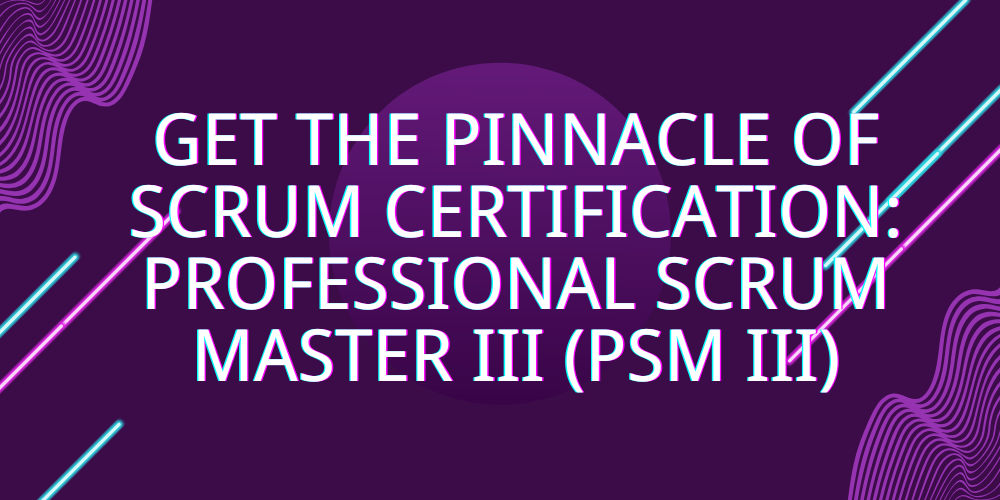
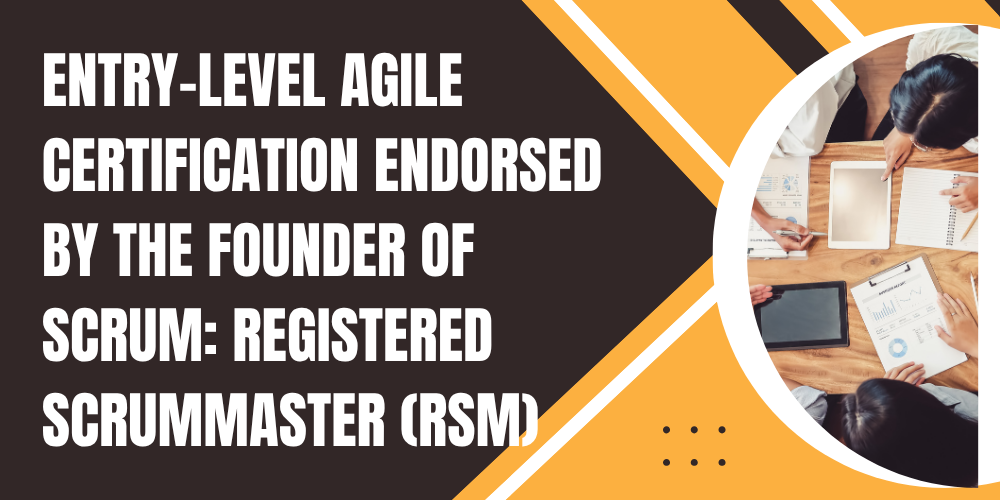
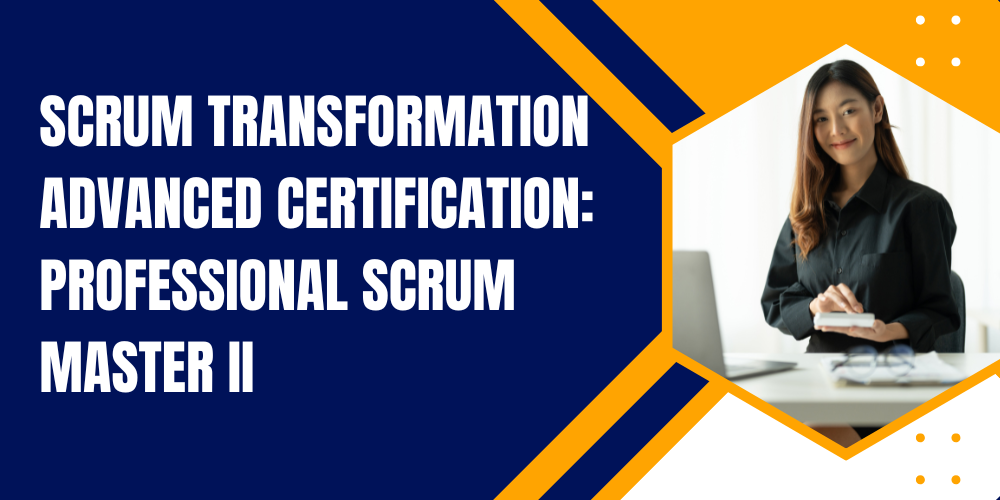

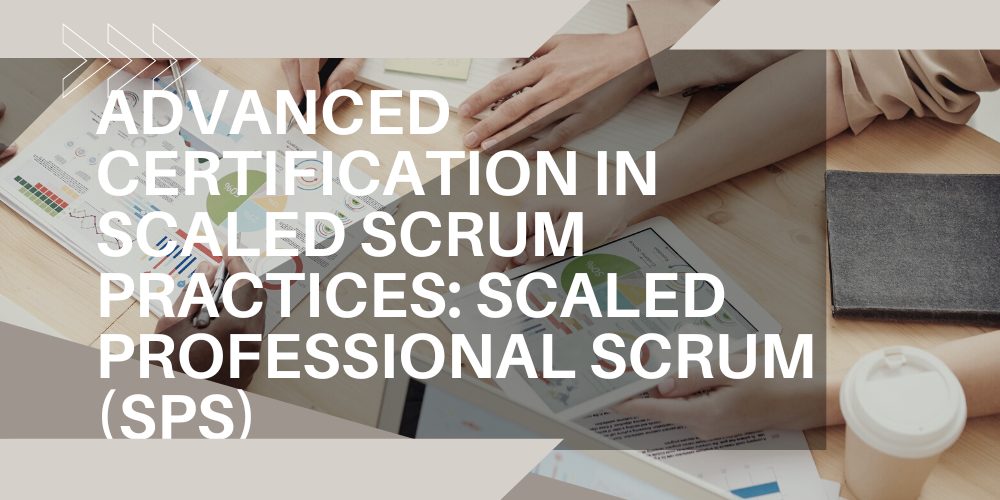


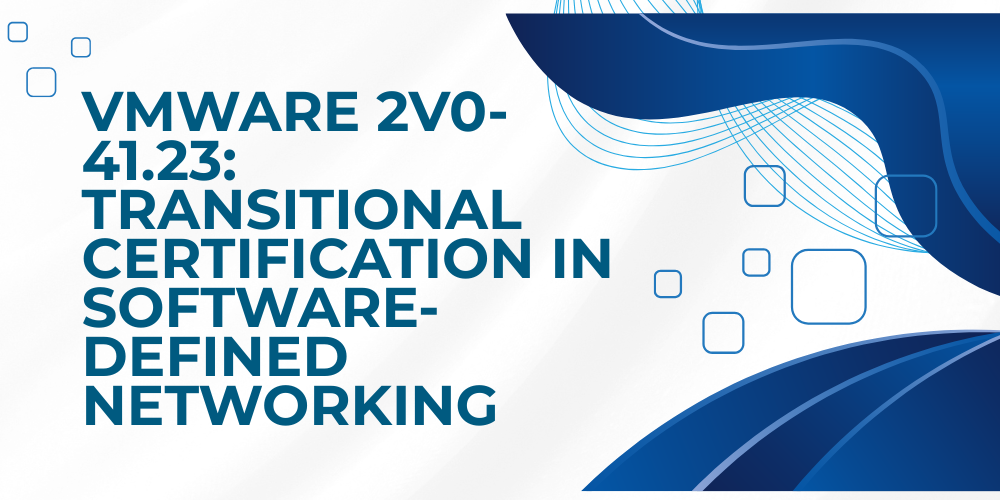
)
